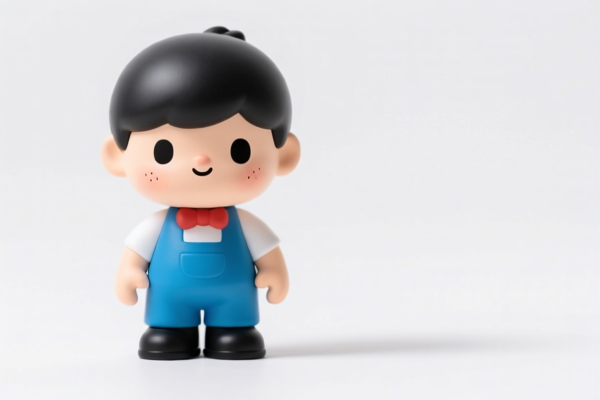| HS Code | Official Doc | Tariff Rate | Origin | Destination | Effective Date |
|---|---|---|---|---|---|
| 9504906000 | Doc | 30.0% | CN | US | 2025-05-12 |
| 9504909080 | Doc | 37.5% | CN | US | 2025-05-12 |
| 9503000090 | Doc | 30.0% | CN | US | 2025-05-12 |
| 9503000071 | Doc | 30.0% | CN | US | 2025-05-12 |
| 6815994170 | Doc | 55.0% | CN | US | 2025-05-12 |
| 6815992000 | Doc | 55.0% | CN | US | 2025-05-12 |
| 6808000000 | Doc | 55.0% | CN | US | 2025-05-12 |




Board Game Toy
A board game toy is a game played on a pre-marked surface, typically a board, with pieces that are moved or placed according to a set of rules. These games serve as a form of recreation and, often, social interaction. They encompass a vast range of complexities, themes, and player counts.
Material
Board games are constructed from a diverse array of materials:
- Cardboard: The most common material for the board itself, game boxes, and many game components.
- Paper: Used for cards, rulebooks, and sometimes game boards (though less durable).
- Plastic: Employed for game pieces, tokens, dice, and storage components. Different types of plastic are used based on required durability and detail.
- Wood: Traditionally used for boards and pieces, offering a premium feel and aesthetic. Still common in classic games and higher-end editions.
- Metal: Utilized for tokens, miniatures, or decorative elements, providing weight and a sense of quality.
- Cloth: Often found in game bags for storage or as game surfaces (e.g., a felt playing field).
Purpose
The primary purpose of a board game toy is entertainment. However, they frequently serve additional functions:
- Social Interaction: Board games encourage face-to-face communication and collaboration (or competition).
- Cognitive Development: Many games promote strategic thinking, problem-solving, memory, and mathematical skills.
- Educational Value: Specific games are designed to teach history, geography, science, or other subjects.
- Creative Expression: Some games allow for storytelling and imaginative play.
Function
Board games function through a combination of elements:
- Rules: A defined set of instructions governing gameplay.
- Components: The physical pieces used in the game (e.g., boards, dice, cards, tokens, miniatures).
- Player Interaction: The ways in which players affect each other's progress or the game state.
- Randomness: Often incorporated through dice rolls, card draws, or other mechanisms to introduce uncertainty.
- Victory Condition: A specific goal that players aim to achieve to win the game.
Usage Scenarios
Board game toys are used in a variety of settings:
- Family Game Nights: A common activity for families to spend quality time together.
- Social Gatherings: Used as a form of entertainment at parties or get-togethers.
- Educational Environments: Incorporated into classrooms to facilitate learning.
- Game Conventions: Played competitively or casually at organized events.
- Solo Play: Many games are designed or adapted for single-player experiences.
Common Types
Board games can be categorized in numerous ways. Here are some common types:
- Abstract Strategy: Focus on pure strategic thinking with minimal theme (e.g., Chess, Go).
- Ameritrash: Emphasize theme, player interaction, and randomness (e.g., Monopoly, Risk). Often involve conflict and direct competition.
- Eurogames: Focus on engine-building, resource management, and limited direct conflict (e.g., Settlers of Catan, Ticket to Ride).
- Cooperative Games: Players work together to achieve a common goal (e.g., Pandemic, Forbidden Island).
- Party Games: Designed for large groups and emphasize social interaction and lighthearted fun (e.g., Codenames, Telestrations).
- War Games: Simulate military conflicts, often with complex rules and historical settings (e.g., Axis & Allies, Memoir '44).
- Role-Playing Board Games: Combine board game mechanics with elements of role-playing games, often involving storytelling and character development (e.g., Gloomhaven, Descent).
- Children's Games: Simplified rules and themes designed for young players (e.g., Candy Land, Chutes and Ladders).
- Legacy Games: Games that change permanently over multiple playthroughs, with evolving rules and components (e.g., Pandemic Legacy, Gloomhaven: Jaws of the Lion).
The declared goods are identified as a board game toy. Here's a breakdown of relevant HS codes based on the provided information:
- 9504906000: This HS code covers video game consoles and machines, table or parlor games (including pinball machines, billiards, special tables for casino games and automatic bowling equipment, amusement machines operated by coins, banknotes, bank cards, tokens or by any other means of payment). Specifically, it includes chess, checkers, parchisi, backgammon, darts and other games played on boards of a special design, as well as parts for these games. It also covers mah-jong and dominoes, and any of these games packaged together as a unit for retail sale. The total tax rate is 30.0% (0.0% basic tariff, 0.0% additional tariff, 30% additional tariff after April 2, 2025).
- 9504909080: This HS code also falls under video game consoles and machines, table or parlor games. It is a more general category for "Other" table or parlor games not specifically listed elsewhere within the 9504 chapter. The total tax rate is 37.5% (0.0% basic tariff, 7.5% additional tariff, 30% additional tariff after April 2, 2025).
- 6815994170: This HS code covers articles of stone or other mineral substances, not elsewhere specified or included. It includes "Other articles" and specifically "Other" within that category. The total tax rate is 55.0% (0.0% basic tariff, 25.0% additional tariff, 30% additional tariff after April 2, 2025).
Important Note:
The classification between 9504906000 and 9504909080 depends on the specific type of board game. If the game is a standard chess, checkers, backgammon, mah-jong, or dominoes set, 9504906000 is more appropriate. If it's a unique or less common board game, 9504909080 may be the correct classification.
If the board game is made of stone or other mineral substances, 6815994170 may be applicable.
Customer Reviews
No reviews yet.